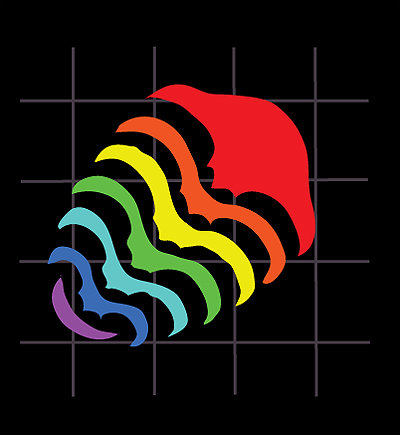Introducing our new Executive Editor, Dr. Carolin Haug!
Palaeontologia Electronica (PE) would like to welcome its newest executive editor to the team, Dr. Carolin Haug! Dr. Haug has been part of the PE team since 2014, working as a handling editor. Please allow me to introduce Dr. Haug, her work, and her anticipations for this new role!
How did you first become interested in palaeontology?
“Originally, I studied biology with the intention to go into biochemistry and investigate the ultrastructure of proteins and similar things. However, I found out that at that time this field was not as far developed as I had expected, and I tried different other subjects during my studies. Palaeontology was not taught at my campus, but an older student told me about the option to study it as a secondary subject at a different campus of my university. When a course I wanted to attend was overcrowded, I decided to skip it and started a course in palaeontology instead. I had always been interested in evolutionary biology, and palaeontology gave my studies in this area an entirely new time frame, far back into the past. Luckily, I had some great professors which were ambitious teachers, so I studied palaeontology as one of my three final subjects for my Diplom (German Master equivalent) in biology.”
What is your favorite fossil?
“This is a tricky question! In general, I love arthropod fossils as this is the group I am usually working with. Probably the most beautiful fossils, in my view, are mantis shrimps, especially those from the Solnhofen limestones. Some of them are preserved with their entire raptorial apparatus, and it is very easy to imagine them as the fierce predators they probably were and still are today. Moreover, my first publication in PE in 2009 was on methods how to image limestone fossils with fluorescence, including mantis shrimps :-)”
What are you most passionate about in your work?
“I really love to make new discoveries, yet not in the quarry, but in old collections. I have been to many museums and also private collections all over the world, and whenever I am allowed to open a drawer in such a collection, I am so happy that I chose this job. Even when looking at specimens that many other people already had in their hands, one may be able to find previously overlooked details, especially when using new imaging methods. It is like digging for treasures!”
“Additionally, I have to admit that I am rather nitpicky. Sometimes that means that things may take longer than expected as I really want them to be the best way possible, but in the end the results are great, so it was worth the effort. I think that this character trait may help me to be a good executive editor, bringing the manuscripts to the best possible final versions.”
How do you anticipate this new role for PE to be different?
“In my position as handling editor, I was most occupied with finding good reviewers for the manuscripts and giving helpful feedback to the authors, but the final decision was not in my hands (though the executive editors usually followed my recommendations). As executive editor, I am now making decisions at the start and the end of the submission process, so it is my task (of course, always together with the other executive editors) to check if a manuscript has the potential to be a good contribution to PE and should be sent to reviewers, and finally to check if the revised version is a valuable contribution to PE with all major and minor errors being corrected.”
What are your expectations going into the executive editor position?
“It is a very responsible position, with the authors expecting decision-making as fast as possible. Therefore, I expect that it will be an exciting job, but with a fast pace that I have to keep up with, which may be challenging. Making the final decision on the fate of a manuscript is a very responsible task. However, we are a team of three executive editors, therefore I am sure that we will support each other when necessary.”
What are you most excited about?
“I am especially excited to see all new manuscripts being submitted! It is great to see that palaeontology is so multi-facetted and that so many authors chose PE as the journal they want their research to be published in.”
Do you have any advice for authors publishing in PE?
“As all editors are doing their job without being paid for it, we sometimes cannot handle manuscripts as fast as we would like as it is not our full-time job. Additionally, it can sometimes be hard to find reviewers for a manuscript (so please, accept our review requests if you get any!). Therefore, I ask authors to be patient with the editorial team, we are really doing our best to process your manuscript. Furthermore, I highly recommend to read the author instructions in detail as a well-prepared manuscript will usually move faster through the review process. If editors and authors work together, we will have great publications!”
Anything else to add?
“I am very happy to be part of the editorial team of PE as a full open access journal. PE started this policy long before it was en vogue, so it is great that I can support it!”
Please join me in welcoming Dr. Haug to her new role! You can find a link to her page here.


